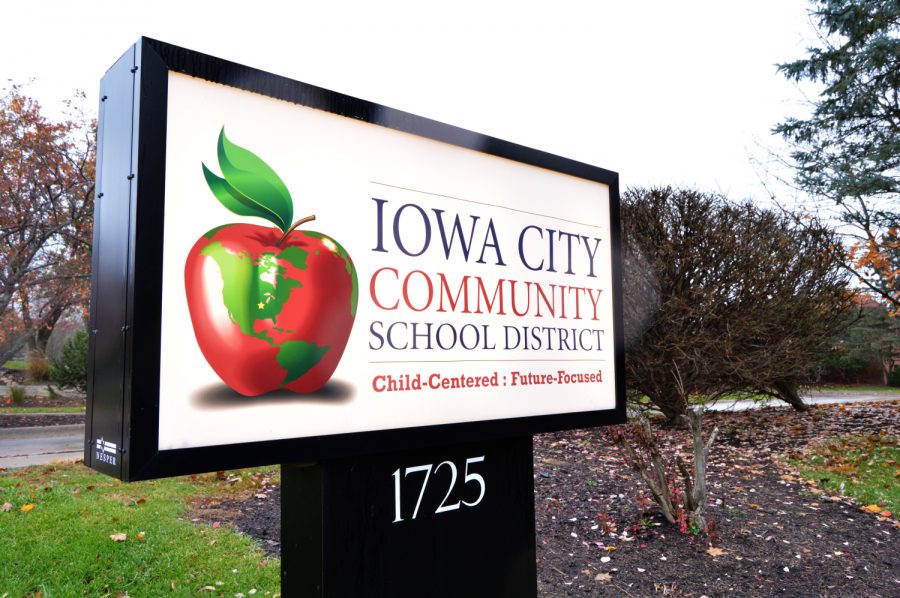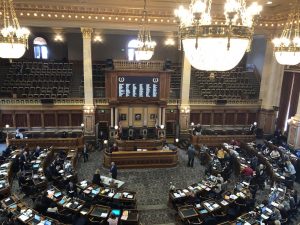Iowa City School District may leave positions vacant
In the next year, the Iowa City School District may not fill vacant positions in order to save money.
The Iowa City Community School District sign is seen on Nov. 5, 2018
March 14, 2019
Iowa City School District officials may cut a total of 75 positions in the district for the 2019-20 school year as the district grapples with having to trim its budget.
The potential position cuts include two administrative positions, an athletics director at the junior-high level, director of employee relations at the Central District Office, and three librarian positions.
RELATED: Iowa legislators brief Iowa City school officials on K-12 education policy
For next year, the district has around a $5.2 million budget deficit it must fill. For each position the district doesn’t fill, it will save $80,000, Superintendent Stephen Murley said.
As of March 11, it did not look as though the district would have to lay off any staff members, he said.
In an effort to prevent layoffs, the district offered an early retirement package to employees, allowing more than 50 people to retire, Murley said. There were a few resignations as well.
“We’re going to leave a couple of those retirements vacant, and we’ll have to transfer some staff around to help cover some of those responsibilities,” he said, “But just like leaving our teacher positions vacant, that gives up the opportunity to make that reduction without doing any layoffs.”
RELATED: After boost in state aid, varied reactions from Iowa school districts
Some of the schools that have full-time librarians may have to move to having part-time librarians as a result of the vacancies, Murley said.
Another possibility is two of the five librarians at the high-school level may be moved to the elementary-school level, he said.
Having a full-time librarian in each elementary school gives students access to books and technology they may not have access to at home, said Lisa Beal, a teacher-librarian at Kirkwood Elementary. Research shows a positive correlation between having school libraries and students’ test scores and graduation rates, she said.
The librarians at the elementary level see students from kindergarten through sixth grade and teach them how to read and find what they need, Beal said. Librarians teach the students how to access digital resources as well as resources through books, she said.
“If kids can’t read or don’t understand the value of reading, that’s not going to get them as far in life,” Beal said.
The librarian in each building is the first person to respond to technology issues students or staff might have, district library coordinator Kristi Harper said. Librarians also help teachers learn how to use the new technology the school gets, she said.
Without a full-time librarian in the building, it can mean technology issues that occur in their absence won’t get fixed until the following day, Harper said.
“I worry that some of the smaller schools — they’re the ones most targeted to not get filled full time,” Harper said. “Those have some of our most marginalized students in them. Those are the students who may not have any other library they can get to.”






